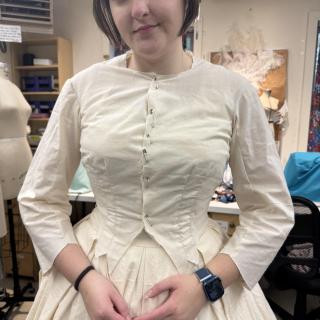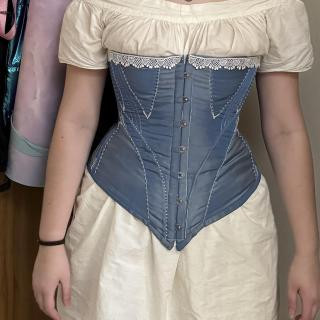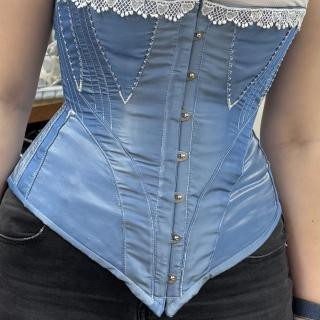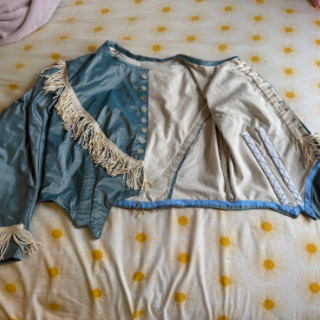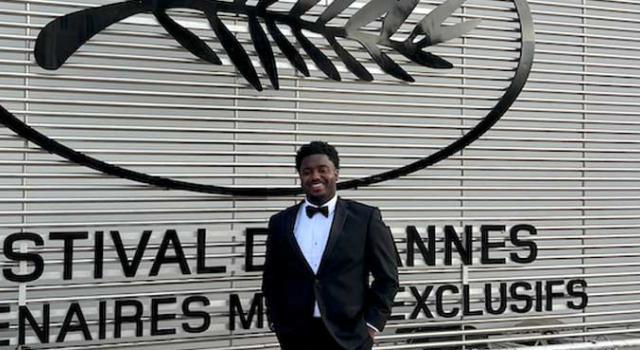On Pins and Needles: Student Lila Maher F24 Uses Hampshire Independent Studies to Perfect Her Craft
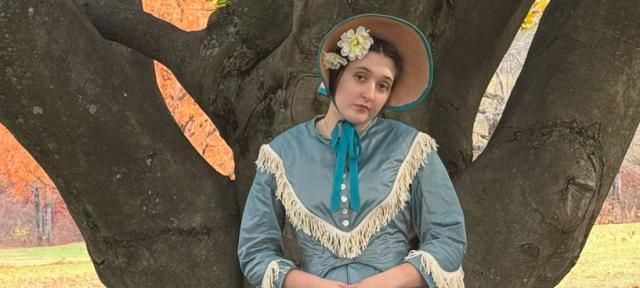
During her time at the College, Maher has become a true historical fashion scholar. The flexible curriculum is enabling her to become an expert in a unique field.
We spoke with her about what drew her to Hampshire, when this passion in dresses from bygone eras began, and what she’s working on now.
What first attracted you to Hampshire?
I was initially interested in Hampshire because of how much academic freedom I could have here. I wouldn’t have the same opportunities anywhere else to do the stuff I’m interested in.
What are you studying? Is it what you thought you’d be focusing on when you came to campus or did it change along the way?
I’m in the first year of my Div II, studying dress history with some normal history on the side. I assumed I’d study fashion design and history, and my interests kinda ended up merging.
How and when did you get interested in historical fashion?
When I was around 14 or so. I learned about it on YouTube, and I’ve been interested ever since. I’ve been sewing since I was very little, but I got a lot more into it after my grandmother died, when I was around 12 years old and inherited all of her sewing supplies.
I wouldn’t have the same opportunities anywhere else to do the stuff I’m interested in.
What are your favorite eras? Any favorite sewing techniques?
The 1860s is definitely my favorite era, but I’m also a big fan of the early Tudor period and the 1660s. I adore some good piping!
What sewing and designing projects have you done at Hampshire?
I made my dress and all of my undergarments in independent studies. It’s been really life changing to be able to do research and construction with the help of people more experienced with historical reproduction. I’m also a signer for the Sewing Club. [Signers play a leadership role in student-led organizations on campus.]
Right now I’m in the process of making an evening bodice for my transformation gown, which is a dress with one skirt and multiple bodices. Skirts in the 1850s and ’60s were so large that it was common for women to have one skirt with multiple tops made to go with it.
Have any professors, advisors, or staff members been particularly inspiring or supportive?
Costume Shop Supervisor Julia Whalen has been instrumental in helping me with this endeavor. When I was working on my corset, she was very helpful, as she has experience with corsetry. She’s also just fun to talk to and work with. I’ve never left a meeting with her without laughing at least once.
Associate Professor of History Jim Wald has also been a really great resource. He teaches more general history, but he’s been super supportive of my studies. His classes can be very hard, but they’ve made me a much better historian.


